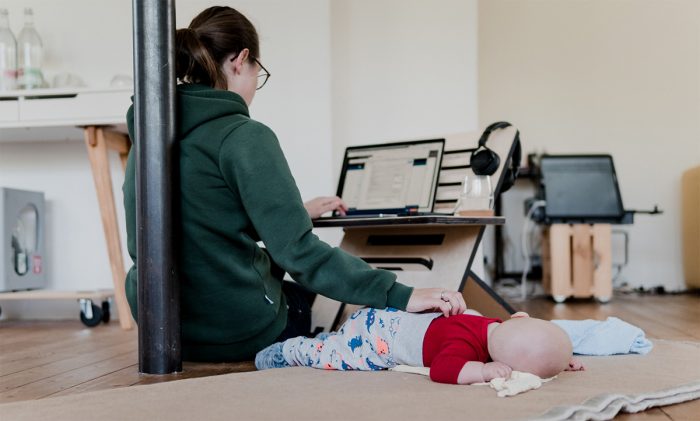Workplace Culture Is Key To Supporting Women Employees
Liquid Agency Culture Strategist Ally Marie Fisher and Vice President of Employee Experience Katie Wagner share their thoughts on how being intentional in supporting women’s employee experience can help.

It’s Women’s History Month 2021, and on the surface, things look pretty good. Our first female vice president just took office. Bumble’s Whitney Wolfe Herd just became the youngest female CEO to take a company public. And Kim Ng is the first woman to be the general manager of a Major League Baseball team.
Yet for every example of women who are “crushing it,” there are countless others who are struggling—especially in the year-long shadow of COVID-19. According to McKinsey & Company and LeanIn.Org’s 2020 study on women in the workplace, burnout, anxiety and mental health struggles are affecting women like never before.
Because of these challenges, 1 in 4 women are considering taking lesser positions or leaving the workforce altogether. Women represent over half the workforce, so if even a small percentage of them actually make these changes, it would mean losing a huge number of skilled, qualified and capable workers and leaders. Even worse, it also means any progress we’ve made on closing the gender gap in leadership positions would be diminished. It’s crucial that we keep women in the labor force, and to do so, we have to make sure they’re supported through an intentionally designed employee experience.
Organizations should take a page from the customer experience playbook and use journey mapping to help understand how women work, what drives them and what they need in order to work more effectively. The process of journey mapping can surface opportunities to stop the burnout, but it can also rally HR teams in support of meaningful change because they’re able to put themselves in their female colleagues’ shoes and respond from a place of empathy.
Normally, journey mapping looks at major phases within the employee journey, starting with attraction and ending when the employee becomes an alumni. But because of the “new normal” and the toll it’s taking, it makes sense to focus on the parts of the journey with the most friction—whether that’s onboarding, performance management, recognition or just how a woman works day to day. Think of what you could learn if you mapped how she does her work through the lenses of her actual physical workspace (even at home), the technology she uses (company supported or not) and the workplace culture being supported. By doing this, organizations can find opportunities for change within their own culture, including:
- Gender bias—Bias against women isn’t new, but it’s showing up in new ways during the pandemic—like the positive or negative perceptions of having kids playing in the background on a Zoom call. The first step in getting rid of this bias is to be aware of it. Building that awareness can mean educational training for employees as well as implementing more formal tracking of promotions, raises and layoffs by gender to spotlight how the organization is treating women in comparison to men.
- Work-life balance—The world has changed radically and our expectations should, too. The lines between work and home are more blurred than ever before, which has left many employees feeling like they’re “always on.” To counteract this, companies should re-establish work-life boundaries and hold to them. This might include blocking calendars for lunch or mental breaks, encouraging employees to log off at certain hours or setting protocols about after-hours communications.
- Clear communication—Some companies have implemented programs that support employees during this time, but many employees aren’t aware of them. That’s why it’s critical to clearly communicate what resources are available. There’s a lot of clutter in workplace communications, and companies need to cut through it if they want their people to hear and understand their message. In analyzing their communications, companies can and should ask themselves, “Can we do more to support the women who work here?”
This is a critical time for women in the workplace and smart organizations need to focus on supporting them. That means taking a hard look at their own culture—their norms, behaviors, processes and communications —to make sure they’re holding women up, not holding them back.

